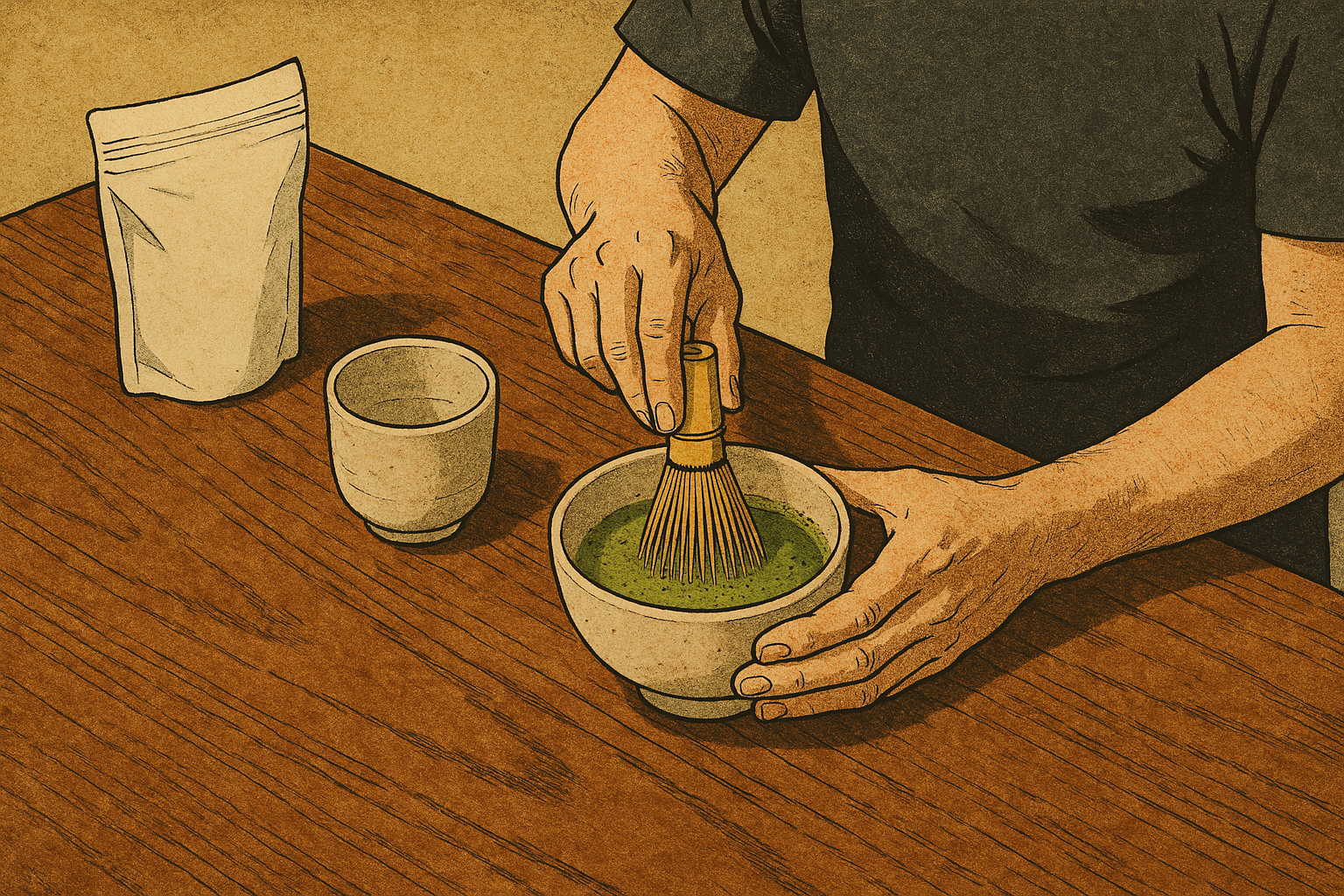Matcha may be Instagram-famous for its bright green color, but this powdered tea is much more than a photo-worthy drink. What many don’t realize is that Matcha Color is more than just a visual detail, but it’s an indication of freshness, quality and even the health benefits you’ll get in every cup. A bright green usually means ceremonial-grade matcha, like Matsu no Midori, which is packed with antioxidants and flavor. By learning to read matcha through its color, you can choose better powder and enjoy matcha the way it’s meant to be.
What Gives Matcha Its Green Color?
Matcha comes from the leaves of the Camellia sinensis plant, the same plant used for oolong and green tea. What makes matcha different is how it’s grown and processed.
Matcha plants are kept in the shade before harvesting. With less sunlight, the leaves produce more chlorophyll, the pigment that gives matcha its bright green color.
This extra chlorophyll also boosts levels of L-theanine, an amino acid that creates the smooth, slightly sweet umami taste found in high-quality matcha.
How Chlorophyll and Matcha Color Benefit Your Health
Chlorophyll offers real health benefits which makes matcha both a flavorful and a healthy drink.
Here’s what chlorophyll in matcha can do for your health:
- Supports Detox: Chlorophyll helps the liver bind to toxins and flush them out.
- Rich in Antioxidants: It protects your body from free radical damage.
- Protects DNA: The chlorophyll helps keep the body’s natural DNA structure intact.
- Boosts Metabolism: It aids fat metabolism and supports weight management.
How to Recognize Good Matcha by Its Color
The easiest way to spot high-quality matcha is by its color and texture. Ceremonial grade matcha has a bright green shade and a silky fine powder. The Matcha Color should appear as fresh as if the leaves were ground the same day they were harvested.
In contrast, culinary grade matcha often looks duller, with a yellow, brown, or olive tint. The powder may also feel coarser, which reflects its lower quality.
If you find matcha with a strong yellow hue and an overly bitter taste, it usually means the powder has oxidized from sitting too long on the shelf.
Fresh, premium matcha, such as Matsu no Midori, always has a bright green color and a smooth texture, indicating that you're getting the greatest quality.
Other Ways to Tell Good Matcha from Bad
While color is one of the most obvious ways to distinguish between mediocre and high-quality matcha, it is not the only factor to consider when buying for matcha. You should also check the aroma and flavor of the matcha.
The highest quality matcha should include a high concentration of L-theanine. This, combined with the high chlorophyll concentration, should result in a sweet, nutty, and pleasantly nuanced flavor. In fact, high-quality matcha tastes so excellent on its own that Japanese monks used to meditate while drinking it.
The scent is another factor to consider. If the matcha smells fresh and powerful, you know you've got some high-quality matcha. If it smells musty, it's definitely been sitting on the shelf for too long. For a reliable option, try the Matsu no Midori Essentials Kit, which delivers both bright color and authentic flavor.
Why Matcha Color Matters Most
Matcha's distinctive green color is more than simply a striking way to stand out at your favorite coffee shop. It's also one technique to determine the quality of the matcha. Ceremonial grade matcha should be bright green, however, culinary grade matcha may seem brown or yellow due to the usage of lower-quality tea leaves.
Cha Lab would never provide you with anything less than the best. Read our blog today to discover more about matcha and its numerous health advantages.



